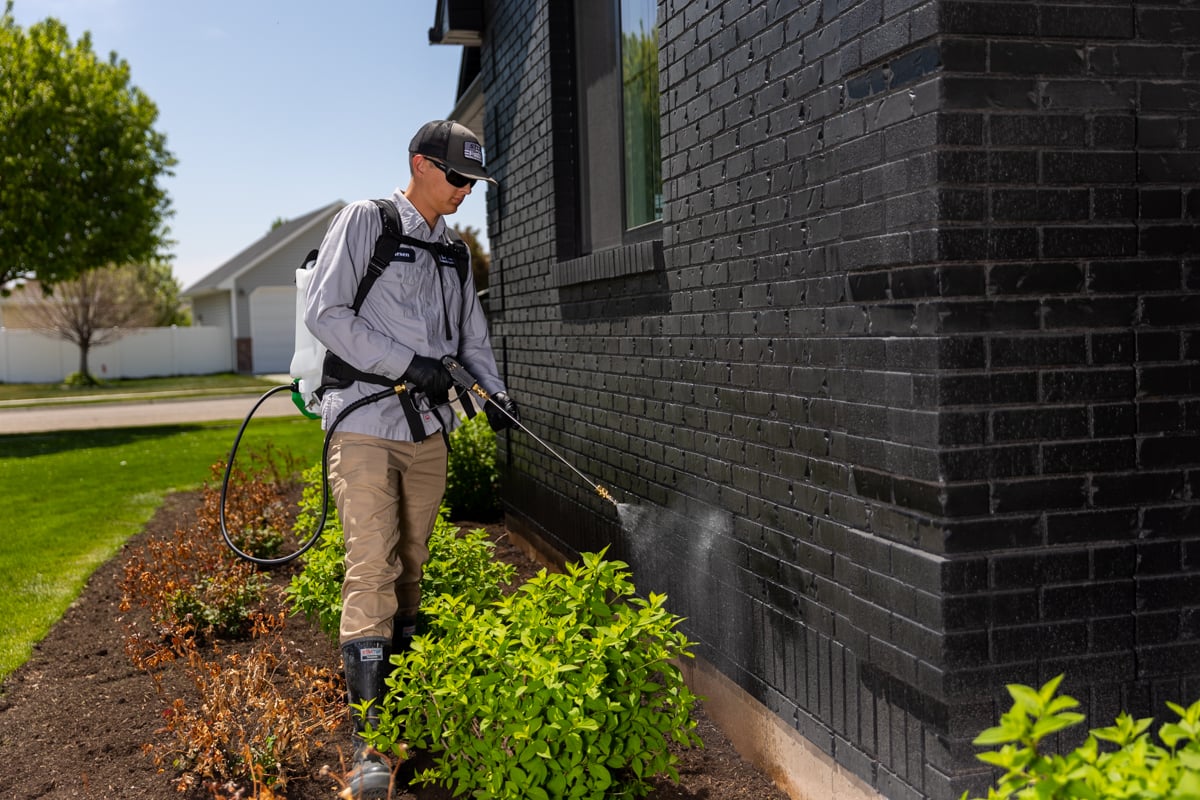Bed Insect Treatment Break Down: Contrasting Chemical Vs. Non-Chemical Solutions
In the realm of pest control, especially when dealing with the consistent concern of bed bugs, the option between chemical and non-chemical therapy solutions can be an essential one. Both approaches provide distinctive advantages and disadvantages, affecting factors such as effectiveness, security factors to consider, and total cost. By taking a look at the nuanced information of each method, a clearer understanding of which course to seek in addressing a bed bug invasion can be acquired.
Effectiveness of Chemical Treatments
Chemical treatments for bed insect problems have actually been widely recognized for their fast and powerful efficiency in eradicating these insects. When thinking about the performance of chemical therapies, it is critical to comprehend that they can offer a fast and thorough option to a bed pest trouble. Specialist pest control experts usually rely upon pesticides to target bed pests at numerous phases of their life process, consisting of eggs, grownups, and nymphs. These chemicals generally function by interrupting the bed insects' nervous system, resulting in paralysis and eventual fatality.
Furthermore, chemical treatments have the benefit of using residual results, indicating that they can continue to remove bed bugs also after the preliminary application. This residual activity is particularly beneficial in combating any kind of prospective re-infestations. Additionally, the quick action of chemical therapies can bring relief to individuals encountering extreme bed bug problems, permitting them to gain back control of their space quickly.
Safety Worry About Chemical Solutions
When making use of chemical services for bed insect therapy is making sure the safety of residents and the atmosphere,One crucial element that calls for careful consideration. While chemical therapies can be effective in eliminating bed insects, they may posture risks if not managed properly. One of the main safety and security interest in chemical options is the potential harm they can trigger to human wellness. Direct exposure to certain chemicals utilized in bed insect treatments can bring about respiratory problems, skin inflammation, or various other negative responses, especially in individuals with pre-existing conditions or level of sensitivities. In addition, inappropriate application or dose of chemical pesticides can result in toxic residues remaining in the treated area, presenting lasting wellness threats to passengers.
Additionally, the environmental impact of chemical services is another substantial factor to consider. Some chemicals utilized in bed insect treatments may be damaging to useful bugs, wildlife, and ecosystems if they seep right into the dirt or water supply. It is necessary to make use of chemical therapies carefully, following safety standards, and thinking about less poisonous choices to reduce these risks and make certain the effective and secure administration of bed bug infestations.
Advantages of Non-Chemical Methods
Considering the possible security concerns and environmental effect related to chemical remedies for bed insect treatment, checking out non-chemical methods offers an appealing choice with a number of distinct advantages. Non-chemical methods use a safer alternative for homes, specifically those with people, youngsters, or pet dogs delicate to extreme chemicals. These techniques get rid of the risks of exposure to harmful compounds, decreasing the capacity for adverse health effects. Moreover, non-chemical therapies are eco-friendly, as they do not add to air or water air pollution, making them a sustainable choice for parasite control.
In addition, non-chemical solutions can be effective in targeting bed pests, including hard-to-reach areas where chemical treatments might not penetrate. Methods such as warm therapy, vacuuming, steam cleaning, and mattress coverings give extensive removal without making use of unsafe chemicals. In addition, non-chemical techniques can be much less turbulent, calling for minimal preparation and allowing for quicker reentry into dealt with areas. Overall, selecting non-chemical bed pest treatment techniques not only focuses on safety and security and environmental management however additionally makes sure efficient and extensive bug control.
Limitations of Non-Chemical Treatments

Additionally, non-chemical therapies often require numerous applications to attain effective obliteration. This can be lengthy and might not constantly guarantee total removal of all bed pests and their eggs, particularly in hard-to-reach or hidden areas.
Moreover, the success of non-chemical treatments heavily relies upon proper implementation and thoroughness, which about his can be challenging for individuals without expert expertise. Inadequate application of non-chemical methods might lead to incomplete obliteration, causing persistent invasions and the requirement for extra therapies.
For that reason, while non-chemical therapies have their benefits, it is important to acknowledge these restrictions and consider them when determining the most effective method for managing bed insect problems.
Cost Comparison: Chemical Vs. Non-Chemical Options
Offered the restrictions connected with non-chemical therapies, an important aspect right here to examine in the context of bed bug management is the price comparison between chemical and non-chemical alternatives. Chemical treatments typically include the application of insecticides by professionals, which can range from $250 to $900 per space, relying on the extent of the invasion and the size of the location to be treated. In contrast, non-chemical treatments like warmth treatment or vapor can be more expensive, with prices varying from $1,000 to $6,000 for a whole home. While the first price of chemical treatments may seem lower, several therapies may be required to fully get rid of the problem, possibly raising the total cost. On the various other hand, non-chemical options might provide an extra sustainable and environmentally friendly remedy, although they can be cost-prohibitive for some people. Inevitably, when considering the expense of bed insect therapy choices, it is necessary to consider the ahead of time expenditures versus the efficiency and lasting sustainability of the selected technique.
Final Thought

Considering the potential safety and security issues and environmental impact connected with chemical options for bed pest treatment, discovering non-chemical techniques offers an encouraging alternative with a number of distinctive benefits.Given the limitations associated with non-chemical therapies, an important facet to evaluate in the context of bed pest management is the cost contrast between chemical and non-chemical options. In comparison, non-chemical treatments like warm therapy or her response heavy steam can be a lot more expensive, with prices ranging from $1,000 to $6,000 for a whole home. While the initial expense of chemical therapies may seem lower, several treatments might be required to fully eradicate the invasion, potentially boosting the overall cost.In verdict, when contrasting chemical and non-chemical bed bug therapy alternatives, it is necessary to think about efficiency, safety, advantages, limitations, and price.